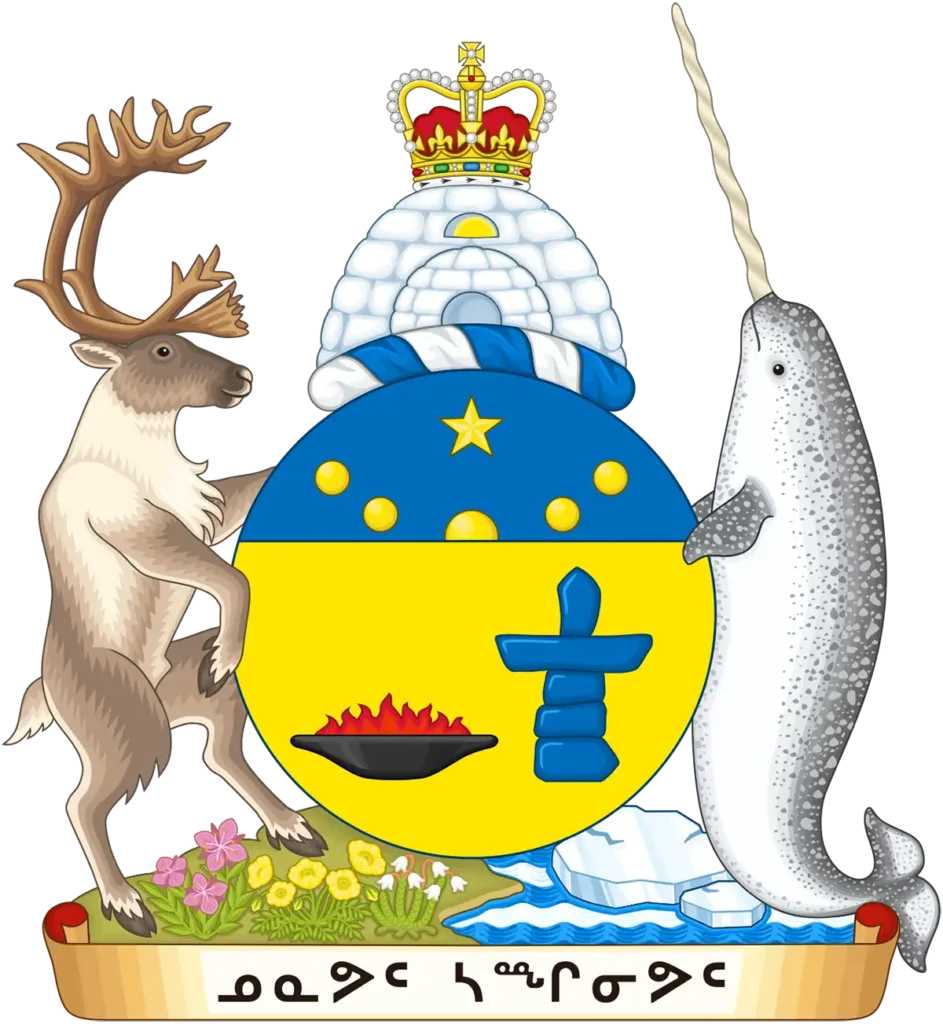Free Nunavut Payroll Tax Calculator

How to Use the Nunavut Payroll Tax Calculator (Step-by-Step)
Understanding your paycheck is crucial, and our Nunavut Payroll Tax Calculator simplifies the process. Follow these easy steps to get an accurate estimate of your net pay:
Step 1: Enter Your Location and Filing Status
- Country: Ensure “Canada” is selected. (This is pre-filled.)
- Province/Territory: Choose “Nunavut” from the dropdown menu. (This is pre-filled.)
- Federal Claim Amount: Enter your federal personal amount. This amount affects the amount of federal income tax withheld from your paycheck. (Use your TD1 form as a guide.)
- Territorial Claim Amount: Enter your Nunavut territorial personal amount. This amount affects the amount of Nunavut territorial income tax withheld from your paycheck. (Use your TD1NU form as a guide.)
Step 2: Input Your Pay Information
- Annual Pay Periods: Select how often you receive your paycheck (e.g., Bi-Weekly (26), Weekly, Monthly) from the dropdown. This is essential for accurate annual calculations.
- Gross Wage/Pay Period: Enter your total earnings before any deductions for the pay period. This is your gross pay.
- Pay Date: Select the pay date using the calendar tool. This is for your reference and does not affect the tax calculations.
Step 3: Calculate Your Taxes
Click the “Calculate →” button.
The calculator will instantly display your estimated:
- Pay Period Section:
- Taxable Income: The portion of your income subject to taxes for the pay period.
- Federal Tax: The estimated federal income tax withheld for the pay period.
- Territorial Tax: The estimated Nunavut territorial income tax withheld for the pay period.
- Total Tax: The sum of federal tax and territorial tax for the pay period.
- Annual Section:
- Taxable Income: Your estimated annual taxable income.
- Federal Tax: Your estimated annual federal income tax.
- Territorial Tax: Your estimated annual Nunavut territorial income tax.
- Total Tax: Your estimated total annual taxes.
- Pay Period Section:
Step 4: Review and Adjust (If Needed)
- Carefully review the calculated results.
- If you need to make changes, adjust the input fields and click “Calculate” again.
- To start a new calculation with different parameters, click the “New Calculation” button.
Important Notes:
- This calculator provides estimates based on the information you provide.
- Actual tax and deduction amounts may vary based on individual circumstances and additional deductions.
- For precise tax calculations, consult a tax professional or refer to official Canada Revenue Agency (CRA) and Nunavut government resources.
- Keep your TD1 and TD1NU forms updated to ensure accurate tax withholding.
Found our Free Nunavut Payroll Tax Calculator useful? Bookmark and share it.

SCHEDULE “A” Reporting Periods for Classes of Employers
| Estimated Total Amount of Remuneration | Class of Employer | Reporting Period |
|---|---|---|
| An amount exceeding $1,000,000 | 1 | Each month ending the last day of the month |
| An amount exceeding $600,000 but less than $1,000,000 | 2 | Each three month period ending March 31, June 30, September 30 and December 31 |
| An amount exceeding $200,000 but less than $600,000 | 3 | Each six month period ending June 30 and December 31 |
| An amount less than $200,000 | 4 | Each year ending December 31 |
| Not Applicable | Seasonal | Each year ending December 31 |
Data Retrieved From: https://www.gov.nu.ca/
Nunavut Payroll Tax: Employer Information and Registration
This section provides comprehensive information for employers regarding the Nunavut 2% Payroll Tax, including registration procedures, responsibilities, and contact details for the Government of Nunavut Taxation Division.
Contact Information
For inquiries and assistance regarding the Nunavut Payroll Tax, please contact:
- Government of Nunavut Department of Finance, Taxation Division
- P.O. Box 2260
- Iqaluit, NU X0A 0H0
- Telephone: (867) 975-6859 or 1-800-316-3324
- Facsimile: (867) 975-5845
- E-mail: payrolltax@gov.nu.ca
Language Support
- For Inuktitut assistance, please call (867) 975-6859 or 1-800-316-3324, or write to the address above.
- For Inuinnaqtut assistance, please call (867)975-6859 or 1-800-316-3324, or write to the address above.
- For French assistance, please call (867) 975-6859 or 1-800-316-3324, or write to the address above.
Employer Responsibilities and Registration
This guide outlines the responsibilities of employers under the Nunavut Payroll Tax Act, including deduction, remittance, and reporting requirements. It aims to provide clarity and prevent errors. Please note that this guide is not a substitute for the Act and its regulations; in case of discrepancies, the legislation prevails.
Who Must Register?
- All employers who pay remuneration to employees for work performed in Nunavut are required to register.
- Employers previously registered in the Northwest Territories as of April 1, 1999, were automatically registered for Nunavut Payroll Tax.
- All other employers must register within 21 days of first paying remuneration to an employee.
Registration Process
- Application for Registration:
- Complete the “Application for Registration” form provided by the Taxation Division.
- Ensure all applicable sections are completed accurately. Incomplete forms will be returned.
- Provide the legal business name, operating/trade name (if applicable), location address, mailing address, and fixed place of business in Nunavut (if applicable).
- Identify a contact person familiar with payroll tax documentation.
- State the date the business began operating in Nunavut and the duration of business operations (year-round or seasonal).
- Estimate the gross remuneration for the current calendar year.
- Provide a brief description of the business.
- Include the Canada Revenue Agency (CRA) business number/GST number or the Nunavut business license number.
- Specify the legal status of the business (proprietorship, corporation, etc.).
- If a corporation, provide the titles, names, and mailing addresses of all officers.
- An authorized officer must certify the application.
- A copy of the Worker’s Safety and Compensation Commissioner Certificate of Compliance must be included with the application.
- Registration with the Legal Registries Division of the Department of Justice is also required.
- Acknowledgement:
- Employers will receive written notification of their registration number, effective date, and reporting period (monthly, quarterly, semi-annually, or annually).
Payroll Tax Details
- Tax Rate: The payroll tax rate is 2% of gross remuneration.
- Remuneration: Includes salary, wages, bonuses, commissions, honoraria, and taxable benefits as defined by the Income Tax Act (Canada).
- Exemptions: Employees who normally work outside Nunavut and earn less than $5,000 in Nunavut per calendar year are exempt. If they earn over $5000, the full amount is taxable.
- Reporting: Employers must file an annual return by February 28th, reporting employee names, social insurance numbers, total remuneration, and tax withheld.
- Remittance: Remittances must be accompanied by a remittance return and are due on the 20th of the month following the reporting period. The government will send out the remittance return 30 days prior to the due date.
- Reporting Periods: Reporting periods are determined based on estimated annual remuneration, as outlined in Schedule A:
- Over $1,000,000: Monthly
- $600,000 – $1,000,000: Quarterly
- $200,000 – $600,000: Semi Annually
- Under $200,000: Annually
- Seasonal: Annually
- Penalties: Failure to register or comply with the Act may result in fines and interest.
- Trust: Employers are considered to hold deducted taxes in trust for the Government of Nunavut.
Determining Employee Taxability under the Nunavut Payroll Tax Act
This section provides detailed guidelines to assist employers in determining whether an employee’s remuneration is subject to the Nunavut Payroll Tax. Understanding these rules is crucial for accurate tax withholding and remittance.
Employees Normally Working in Nunavut
- Definition:
- An employee is considered to “normally work in Nunavut” if they perform work, duties, or services within Nunavut for more than half of their total workdays for that employer during the calendar year.
- Tax Liability:
- If an employee is determined to normally work in Nunavut, all remuneration earned from that employer during the year is subject to the 2% Nunavut Payroll Tax.
Employees Normally Working Outside Nunavut
- Definition:
- An employee is considered to “normally work outside Nunavut” if they perform work, duties, or services outside Nunavut for more than half of their total workdays for that employer during the calendar year.
- Tax Liability (Partial):
- If an employee normally works outside Nunavut, they are liable for the 2% Nunavut Payroll Tax on remuneration earned for any days (or portions of days) they work within Nunavut.
- Exemption Threshold:
- An employee who normally works outside Nunavut is exempt from the Nunavut Payroll Tax if their total remuneration earned from that employer for work performed in Nunavut during the calendar year does not exceed $5,000.00.
- Important Note: Once the $5,000.00 threshold is exceeded, all remuneration earned in Nunavut during the year becomes taxable, not just the amount exceeding $5,000.00.
Taxable Employee Benefits (Common Misconceptions)
Employers should be aware that the following employee benefits are taxable under the Nunavut Payroll Tax Act, despite often being mistakenly considered non-taxable:
- Vacation Travel Assistance: Any assistance provided by the employer for employee vacation travel.
- Housing Allowances: Any allowances provided to employees for housing costs.
- Employer Contributions to Non-Registered Pension Plans: Employer contributions to employee pension plans that are not “registered pension plans” as defined in the Income Tax Act (Canada).
Additional Resources
- For a more comprehensive list of taxable and non-taxable items, please refer to Schedule A and B of the “Guide to Payroll Tax Withholding and Reporting,” available from the Government of Nunavut Taxation Division.
Key Considerations
- The determination of “normally working” is based on the number of workdays, not the amount of time spent in Nunavut.
- Employers must maintain accurate records of employee work locations to ensure compliance with the Act.
- It is the employers responsibility to understand the tax laws, and to stay informed of any changes.


Nunavut Payroll Tax Act and Regulations: Key Provisions for Employers
This section provides a detailed overview of the key provisions of the Nunavut Payroll Tax Act, 1993, and its associated regulations. It covers definitions, tax collection procedures, employer responsibilities, reporting requirements, objections and appeals, registration processes, and employee assessments.
Definitions and Prescribed Amount
- The regulations define key terms such as “Act,” “annual return,” “application for registration,” “notice of appeal,” “notice of objection,” “prescribed amount,” “remittance return,” and “tax payable.”
- The “prescribed amount” for the purpose of paragraph 3(2.2)(b) of the Act, which relates to exemptions for employees normally working outside Nunavut, is set at 5,000.
Tax Collection Procedures
- Deduction at Source: Employers are required to deduct the Nunavut payroll tax from employee payments at the time of payment.
- Non-Monetary Remuneration:
- For non-monetary remuneration (e.g., benefits, allowances), employers must assign a reasonable monetary value.
- This valuation should ideally be done within the same calendar year.
- If valuation within the year is not feasible, it must be completed no later than February 28th of the following year.
- The corresponding payroll tax is then collected by withholding it from monetary payments made to the employee.
- Uncertain Work Location:
- Guidelines are provided for situations where an employee’s work location (within or outside Nunavut) is uncertain.
- This ensures that payroll tax is collected accurately once the employee’s work location is definitively determined to be in Nunavut.
- $5,000 Exemption Threshold:
- If an employee normally works outside Nunavut and there is uncertainty about whether their Nunavut-earned remuneration will exceed the $5,000 exemption threshold:
- If the employer reasonably expects the $5,000 limit to be reached, they must begin deducting payroll tax.
- If the $5,000 threshold is not ultimately exceeded, the employer must refund the taxes deducted.
- If an employee normally works outside Nunavut and there is uncertainty about whether their Nunavut-earned remuneration will exceed the $5,000 exemption threshold:
- Continued Deduction: Employers are obligated to continue deducting payroll tax from all employee payments until the total tax liability under the Act is fully satisfied.
- Refunds of Overpayments: Employers must refund any overpayments of payroll tax to employees. This includes refunds resulting from uncertainties in work location or remuneration amounts.
Reporting Requirements
- Employers must file remittance returns and annual returns as per specified schedules and deadlines.
- Reporting periods are determined based on the employer’s estimated annual remuneration, with specific provisions for seasonal employers.
- Remittance returns must include employer information, registration number, reporting period, and total remuneration paid.
- Annual returns must include employee information, total remuneration paid, and tax withheld.
- Procedures are outlined for filing returns, remitting tax, and amending returns in case of errors or changes.
- Specific instructions are given for situations where an employer ceases operations during the year.
Objections and Appeals
- Regulations detail the required information for notices of objection and notices of appeal filed by employers or employees.
- Notices must include legal names, addresses, registration numbers, assessment dates, and certificate of verification.
Registration
- The “Application for Registration” must include comprehensive employer information, such as legal name, business type, addresses, contact details, business description, and estimated remuneration.
- A certificate of compliance with the Workers’ Compensation Act is required as part of the registration process.
- The effective date of registration is the date the application is received by the Minister.
Assessment of Employees
- The Minister may assess employees for tax payable, with modifications to standard assessment procedures as necessary.
- Relevant sections of the Act are applied to employee assessments and tax collection.
Miscellaneous Provisions
- Details provided on the calculation of interest rates for refunds.
- Repealing of previous payroll tax registration regulations.
- Outlines of when the regulation comes into effect.
- Provided shedule A, describing the reporting periods for different classes of employers.
- Provided schedule B form A, which is the “Certificate of compliance with the Workers compensation act”.
Guidelines for Determining Employee Taxability under the Nunavut Payroll Tax Act
This section provides clear guidelines for employers to accurately determine if an employee’s remuneration is subject to the Nunavut Payroll Tax. The determination hinges on where the employee “normally works” and the amount of remuneration earned within Nunavut.
Employees Normally Working in Nunavut
- Definition:
- An employee is considered to “normally work in Nunavut” if they perform work, duties, or provide services within Nunavut for more than 50% of their total workdays for a specific employer during the calendar year.
- Tax Liability:
- If an employee is classified as “normally working in Nunavut,” all remuneration earned from that employer during the calendar year is subject to the 2% Nunavut Payroll Tax.
Employees Normally Working Outside Nunavut
- Definition:
- An employee is considered to “normally work outside Nunavut” if they perform work, duties, or provide services outside Nunavut for more than 50% of their total workdays for a specific employer during the calendar year.
- Tax Liability (Partial):
- If an employee is classified as “normally working outside Nunavut,” they are liable for the 2% Nunavut Payroll Tax only on the remuneration earned for the specific days (or portions of days) they physically work within Nunavut.
- Exemption Threshold:
- An employee who “normally works outside Nunavut” is exempt from the Nunavut Payroll Tax if their total remuneration earned from that employer for work performed in Nunavut during the calendar year does not exceed $5,000.
- Important Note: Once the $5,000 threshold is surpassed, the exemption is nullified, and the 2% Nunavut Payroll Tax applies to the entire amount of remuneration earned in Nunavut during that calendar year, not just the amount exceeding $5,000.
Taxable Employee Benefits (Common Misconceptions)
Employers often mistakenly consider certain employee benefits as non-taxable. However, under the Nunavut Payroll Tax Act, the following benefits are indeed taxable:
- Vacation Travel Assistance: Any employer-provided assistance or allowances for employee vacation travel.
- Housing Allowances: Any employer-provided allowances for employee housing expenses.
- Employer Contributions to Non-Registered Pension Plans: Employer contributions to employee pension plans that are not “registered pension plans” as defined by the Income Tax Act (Canada).
Additional Resources
- For a more comprehensive list of taxable and non-taxable items, employers should refer to Schedule A and Schedule B of the “Guide to Payroll Tax Withholding and Reporting,” available from the Government of Nunavut Taxation Division.
Key Considerations for Employers
- The determination of “normally working” is based on the number of workdays spent in Nunavut versus outside Nunavut, not the total amount of time.
- Employers must maintain detailed and accurate records of employee work locations to ensure accurate payroll tax calculations and compliance with the Act.
- It is the employers responsibility to stay up to date on any changes to the Nunavut Payroll Tax Act, and to be aware of all taxable benefits.

Other Canadian Payroll Tax Calculators
Loading calculators based on your location…
Disclaimer: The content provided on this webpage is for informational purposes only and is not intended to be a substitute for professional advice. While we strive to ensure the accuracy and timeliness of the information presented here, the details may change over time or vary in different jurisdictions. Therefore, we do not guarantee the completeness, reliability, or absolute accuracy of this information. The information on this page should not be used as a basis for making legal, financial, or any other key decisions. We strongly advise consulting with a qualified professional or expert in the relevant field for specific advice, guidance, or services. By using this webpage, you acknowledge that the information is offered “as is” and that we are not liable for any errors, omissions, or inaccuracies in the content, nor for any actions taken based on the information provided. We shall not be held liable for any direct, indirect, incidental, consequential, or punitive damages arising out of your access to, use of, or reliance on any content on this page.
Trusted By
Trusted by 3.2M+ Employees: 21 Years of Service Across Startups to Fortune 500 Enterprises
Join our ever-growing community of satisfied customers today and experience the unparalleled benefits of TimeTrex.










Strength In Numbers
Join The Companies Already Benefiting From TimeTrex
Time To Clock-In
Start your 30-day free trial!
Experience the Ultimate Workforce Solution and Revolutionize Your Business Today
- Eliminate Errors
- Simple & Easy To Use
- Real-time Reporting

Saving businesses time and money through better workforce management since 2003.
Copyright © 2025 TimeTrex. All Rights Reserved.
